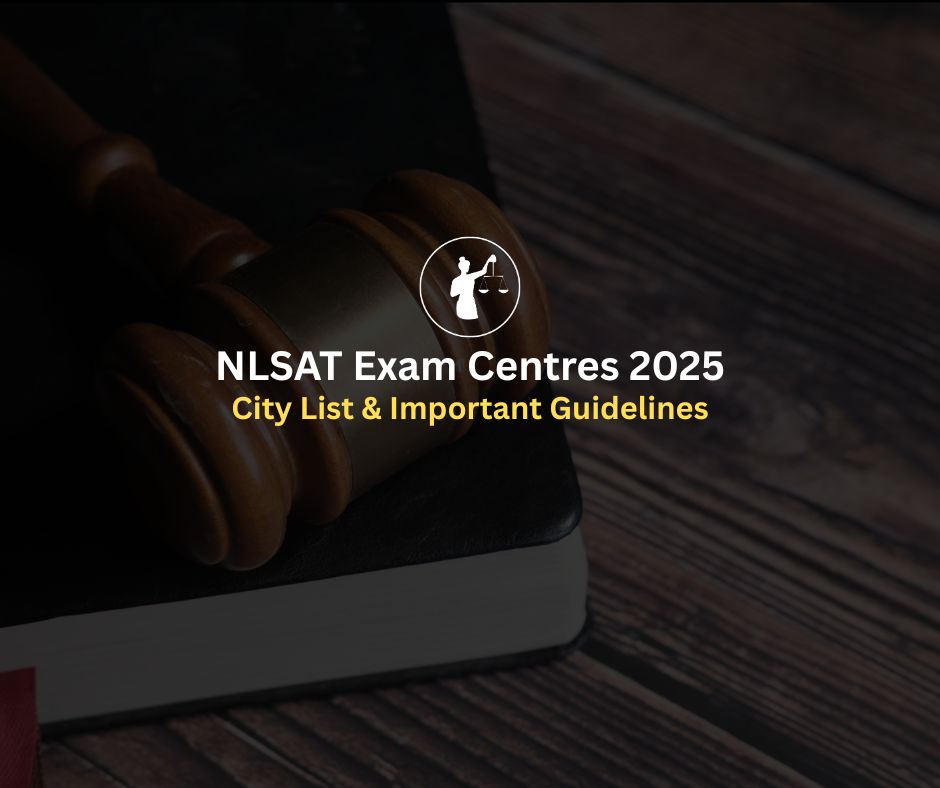
Every serious law-aspirant in India faces a critical decision: which entrance test should one target? With exams like the CLAT 2026, AILET, and DU LLB Entrance among the top choices, understanding the distinctions between them is key. This detailed law entrance exams comparison explores how CLAT 2026 vs AILET, CLAT vs DU LLB, and other major exams differ in pattern, syllabus, difficulty, seats and career pathways. By the end, you’ll have clarity on which exam aligns best with your strengths and goals.
Best CLAT Coaching Online 2026–2027 by NLTI
Choosing the right exam isn’t just about cracking one test, it’s about aligning your preparation with the right exam format, timing and target law school. If you ignore differences and prepare generically, you risk inefficient effort and missed opportunities. A strategic comparison of exams helps you:
Select the exam whose structure suits your reading & reasoning abilities.
Plan effort proportionately when preparing for multiple exams.
Avoid trap of preparing only for one style and failing others.
Hence, this law entrance exams comparison is essential for smart preparation.
The CLAT 2026 UG paper comprises 120 questions to be completed in 2 hours (120 minutes).
Each correct answer earns +1 mark; each wrong answer deducts 0.25 marks.
Sections and approximate weightage:
English Language (~22-26 questions)
Current Affairs + General Knowledge (~28-32)
Legal Reasoning (~28-32)
Logical Reasoning (~22-26)
Quantitative Techniques (~10-14)
The paper is offline (pen-and-paper) and designed to test comprehension, inference, logic and basic numeracy rather than deep prior legal knowledge.
Why this matters for you: If you excel in reading dense passages quickly, reason passages, and can maintain accuracy under time pressure, CLAT suits you.
Read More: Live Classes vs Recorded Modules: Best for CLAT Prep
The AILET exam, conducted by National Law University, Delhi, targets admission into its UG and PG law courses. According to recent overviews:
More than 3 sections but the format emphasises heavy reading and advanced reasoning.
It is commonly viewed as concept-heavy with less buffer time per question.
Key differences compared to CLAT:
Long passages and tougher inference-style questions.
No dedicated Quant section (in many years) or lower weight for Quant.
Seat availability is extremely limited (approx. 110 seats for BA LLB) compared to the many NLUs under CLAT.
Why this matters: If your strength lies in deep analytical reading, legal reasoning, and you want the specific target of NLU Delhi, you may prefer AILET.
The University of Delhi conducts its entrance exam for the 3-year LLB programme. Key features:
~100 questions in about 90–105 minutes (varies by year)
Sections: Legal Awareness, General Knowledge/Current Affairs, English, Reasoning.
Heavier emphasis on factual GK and legal awareness rather than heavy passage inference.
Why this matters: If you are good at factual GK, quick reasoning and want to target DU specifically, the DU LLB exam may align better with you.
Read More: Adaptive Tests & Personal Feedback in CLAT 2026 Coaching
SLAT (Symbiosis Law Admission Test): Shorter format, used by Symbiosis law schools. Good for those targeting private/university law seats.
MH CET Law: Maharashtra state-level; often multilingual and has state quota advantages. Good for Maharashtra aspirants.
LNAT UK: Analytical and reasoning heavy; useful for private law colleges and as practice tool.
These exams are included in the broader law entrance exams comparison but each has its specific format and target audience.
Read More: CLAT 2026: Scoring, Negative Marking, Cutoffs & Tie-Breakers
Reading density & time control: AILET often presents longer passages, fewer but tougher questions, creating more time pressure.
Section structure differences: CLAT has Quantitative Techniques (~10-14 questions) which is absent or very low in AILET.
Seat count & competition: CLAT provides wider access (multiple NLUs) whereas AILET is focused on one institution with fewer seats → competition per seat is higher.
Time per question: Because of fewer sections or fewer but denser questions, AILET may require faster decision-making.
Hence the statement: in a direct face-off, the exam best aligned to your strengths will feel “harder” for the other. The winner is the one you are best fitted for.
Degree outcome: CLAT leads primarily to 5-year integrated BA/BBA LLB programmes at NLUs; DU LLB leads to 3-year LLB at University of Delhi.
Skill alignment: CLAT prioritises reading speed, inference and logic; DU LLB favours factual GK, legal awareness and quick recall.
Competition and target institution: NLUs via CLAT have national reach; DU offers prestige in Delhi but fewer seats and different structure.
Final point: If your strength is deep reasoning + reading stamina, target CLAT; if you have strong GK base and aim specifically for DU, go DU LLB. Doing both is feasible but needs hybrid strategy.
Read More: Free vs. Paid CLAT Online Coaching: What Works Better?
If you are:
Strong reader, inference solver → Prioritise CLAT 2026 (and AILET as backup).
Strong factual GK, quick recall, prefer Delhi University route → Prioritise DU LLB (and CLAT if you can add extra prep).
Prefer private/university law schools, or local/state quota seats → Prioritise SLAT, MH CET Law, etc.
Remember: this is a law entrance exams comparison, so pick the exam you can align your preparation to rather than chase every exam.
Yes, with a smart integrated plan:
Phase 1 (Months 1-4): Build reading stamina, core reasoning skills, GK timeline shared across exams.
Phase 2 (Months 5-8): Add exam-specific practice: CLAT Quant sets, AILET advanced RCs, DU GK drills.
Phase 3 (Final 2 months): Simulate each exam format: CLAT full mocks (120Q/120min), AILET long-passage drills, DU quick recap and short mocks.
With this layered approach, you convert the overlap into preparation leverage, and handle differences with minimal extra effort.
NLTI has become a trusted choice for students preparing across multiple law entrance exams because of its structured, exam-specific approach. Instead of offering a single generic curriculum, NLTI designs separate tracks for CLAT 2026, AILET, and DU LLB, ensuring that students get targeted practice aligned with each exam’s unique difficulty, pattern, and question style.
For CLAT 2026, NLTI focuses on comprehension-heavy modules, reading-speed training, and passage-based reasoning. For AILET, the emphasis shifts to high-difficulty logical reasoning, dense legal passages, and precision-driven practice. DU LLB preparation includes GK-heavy content, legal aptitude drills, and static awareness reinforcement—areas where most students struggle without guided support.
A major strength of NLTI is its mentor-led feedback cycle. Students receive weekly performance reviews, accuracy reports, time-management guidance, and personalized improvement plans. This helps them refine strategy instead of relying solely on content consumption.
NLTI’s mock ecosystem also mirrors actual exam difficulty, ensuring realistic preparation for CLAT, AILET, and DU LLB. Consistent student results, including selections in top NLUs and strong AILET ranks, reflect NLTI’s reliability. For aspirants seeking structured preparation across multiple exams, NLTI offers a focused, high-utility model.
1. Which exam is tougher: CLAT 2026 or AILET?
AILET is generally tougher because of higher difficulty in Legal and Logical Reasoning, while CLAT 2026 focuses on reading-based comprehension. This difference often appears in CLAT 2026 vs AILET comparisons.
2. Is DU LLB easier compared to CLAT?
DU LLB is considered easier conceptually but requires strong GK and legal aptitude. Students searching CLAT vs DU LLB usually notice DU LLB’s heavier static GK load.
3. Do I need separate preparation plans for CLAT, AILET, and DU LLB?
Yes. All three exams test different skills, so students should follow a structured law entrance exams comparison strategy before planning.
4. Can one set of mock tests work for all law exams?
No. CLAT mocks are passage-based, AILET mocks are difficulty-dense, and DU LLB mocks emphasize GK. Use exam-specific mock series.
5. Is the syllabus completely different for CLAT 2026 vs AILET?
The core subjects overlap, but AILET adds more intensive reasoning and longer legal passages, making preparation methods different.
6. Which exam has better career opportunities: CLAT or DU LLB?
CLAT offers entry into NLUs; DU LLB leads to a strong 3-year law program with good litigation exposure. The choice depends on career goals.
7. Can I prepare for CLAT, AILET, and DU LLB simultaneously?
Yes, if you follow a balanced timetable focusing on comprehension (for CLAT), difficulty-based LR/Legal (for AILET), and GK/legal aptitude (for DU LLB). This is a common approach in law entrance exams comparison planning.




